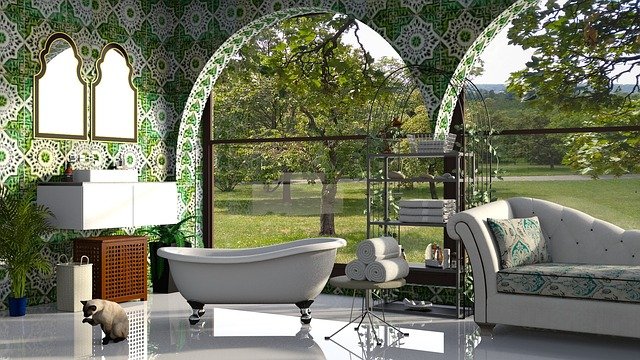Good interior lighting design in the home can greatly impact your feelings and mood. It can also impact your productivity and mental health.
People often overlook the importance of good interior lighting design in their homes. They do this because it is one of those things that people don’t notice until it’s not there. You might not notice if you’re living with natural light, but when the power goes out, or daylight fades in winter, good lighting becomes really important.
Here are a few tips for choosing the right interior design lighting for your home.
Table of Contents
Understand the Different Types of Interior Design Lighting You Can Choose From
Lighting is an important component of interior design. It can be used to complement the existing architecture or add a layer of creativity to the space.
There are three different types of interior lighting: ambient, task, and accent. Ambient lighting spreads evenly on all surfaces, filling the space with natural light from windows or lamps. Task lighting focuses on one area and helps you see better when reading or working in that area. Accent lighting provides decorative illumination for specific spots in your room to make them stand out.
Not all types of lights are appropriate for every space; it will depend on what you want to highlight and where you want the focus to be.
Study Your Space to Determine How Much Light You Need
The amount of light needed for a writing space is different for everyone.
For example, if you are a writer working on a novel at home, you might need more light than if you were just working on blog articles. It’s important to understand how much light your space needs to avoid eye strain and make your writing experience more comfortable.
Some people like to have natural light coming in through large windows, while others prefer to have artificial lighting because they can control the intensity and the direction of the light more easily.
Think about the Practical Aspects of Your Interior Design Lighting Plan
The different types of interior lighting you choose for your home depend on your needs. For instance, if you have a room with lots of natural light, you may only need to use lamps or table lamps.
Read More: 12 Stylish but Practical Kitchen Flooring Ideas
Decide which type of light bulb to use based on the size and shape of the room. Make sure that the bulbs are placed properly to avoid glare and shadows.
Consider Electrical Requirements Like Plug Locations and Voltage
When considering electrical requirements, there are three main factors to consider: plug locations, voltage, and power sources. The plug location should be in an easily accessible location that will allow for most cords to reach it without any issues. The voltage is concerned with the amount of power that is being pumped into the outlet and needs to match the voltage requirement of your computer and other equipment, such as monitors, keyboards, and printers. Power sources differ from plug locations because they refer to where the cord from your outlet is plugged in. If you have more than one power source throughout a room or building, you will need extension cords to reach all equipment.
Make Sure You Pick a Style That Flows with Interior Design Lighting
When applying the styles to your home, ensure it is in line with the rest of your decor and design.
Read More: 14 Aesthetic Bloxburg House Ideas
There are many types of interior lighting design styles to choose from. When picking a style, it is first important to research all the different styles and then decide on one that would best fit your style.
Make Your Room More Productive
Lighting is one of the essential elements in your home because it can make you feel relaxed and happy. Thus, you must understand how each type of lighting will affect your mood and productivity. If you have a window that looks out toward the northeast side of your house, then use lights with higher brightness levels. Next would be using indirect lighting inside rooms instead of overhead light fixtures. Indirect lighting adds warmth, makes colors look better, and brings drama into the room at night. Use the right amount of lighting for the activity you are doing in your home.
Make Your Room More Appealing
Color can get boring sometimes, and you could opt to use dark-colored fabrics, making it difficult for people to see what is on the other side of your sofa or bed. To add more color to your room, it is best to install recessed lighting fixtures with bright colors like red lights, which make people relax, or yellow lights, which are great for making rooms look larger. Consider using a mirror on the ceiling to reflect light from other sources like windows, chandeliers, or wall sconces. Mirrors on ceilings help bring more brightness into the room and make your home look bigger.
Homes with Big Windows
Open spaces, such as living rooms with big windows, need lots of lighting. Natural sunlight into your home makes you feel motivated, happy, and healthy. So if you are planning to build a house in an area with lots of sunshine every day, consider installing more skylights instead of using overhead lights. For example, installing lights closer to the floor rather than overhead light fixtures will make your room look better.
For Newly Built Homes
Lighting experts say, “If you are building a new house, consider installing LEDs in your home, giving you three times better results than other lighting types. Using LED lights, homes can save energy and heat rooms faster due to their heat-producing properties. This is very suitable in colder countries.” These days, many people install LED lights because of their huge savings on electricity bills and their unique properties like bright colors and different light variations that this type of lighting can provide.
Read More: 18 Latest Gate Designs For Home
If you want to have fun with your friends or family at night, installing crystal chandeliers will be a good idea. Their brilliant shine and superb light production are not only ideal for special occasions but are great indoor lighting options as well.
Improve Your Room’s Aesthetics
When you want your room to look more attractive, install LED ceiling lights or maybe use warm white bulbs that can make your house glow at night with the help of dimmers. Add additional lamps near coffee tables and side tables to provide soft light effects on furniture and walls, especially if the people in the room are sensitive to bright lights.
For home interiors, use a combination of sconces and table lamps to produce soft light effects while doing more detailed tasks like working on documents at night while improving your room’s aesthetics.
Make Your Home Look Bigger
If you want your home to look bigger after installing lights, consider using pulley lights or string lights that can be hung from your ceiling (this works great in hallways and porches).
To Improve Mood
You should choose the right color of light. If you want your room to look more inviting, then consider using amber lights or red lights. For children’s bedrooms, use a combination of blue and white colors because they make them feel safe and sound like they are in their own little world.
If you want your home to feel warm and cozy, like being inside a big hug from Mother Nature, choose warmer shades like a yellow glow or orange bulbs that produce comfort. On the other hand, if you want your place to look more relaxed so that visitors can stay longer without feeling tired, then try adding green lights, which have incredible healing properties.
Read More: 17 Latest Master Bedroom Wall Art Ideas
The following tips will help you create a beautiful and functional home with the right lighting. Remember, proper interior design is all about balance. By incorporating these seven interior design lighting tips for beginners into your next project, you’ll be able to achieve this delicate balance in no time at all!


